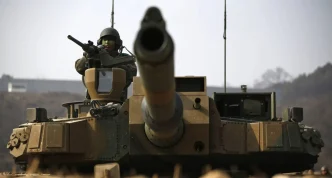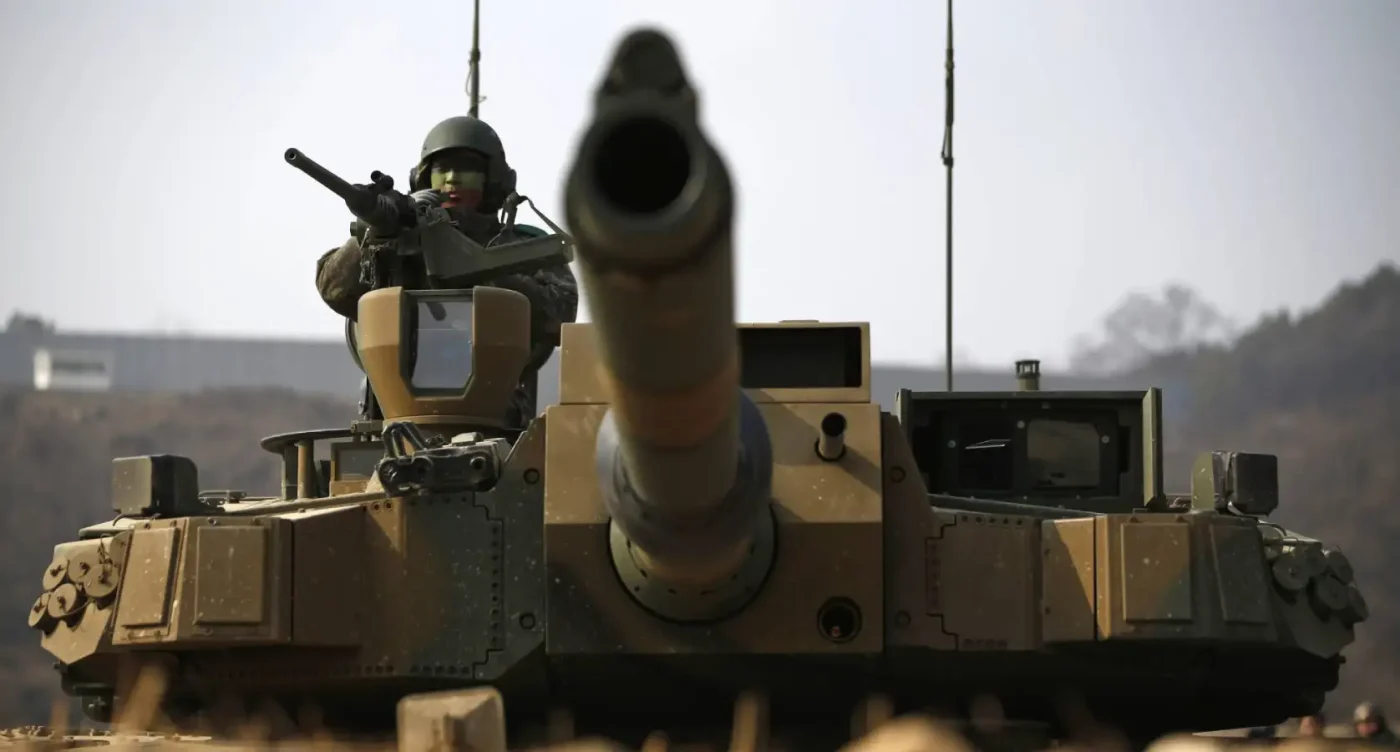South Korea is intensifying its defense partnerships in Southeast Asia, with the Philippines emerging as a key ally in Seoul’s ambitious goal to become the world’s fourth-largest arms exporter by 2027. At the recent International Maritime Defense Exhibition (Madex) 2025, held from May 28 to 31 in Busan, South Korean defense firms showcased cutting-edge maritime and military technologies, drawing significant interest from Philippine military officials. With major contracts on the horizon, including a deal for advanced fighter jets and naval vessels, this burgeoning relationship underscores broader geopolitical shifts in the region.
Showcasing Military Might in Busan
The Madex 2025 exhibition, hosted in Busan—a port city approximately 300 kilometers south of Seoul—served as a platform for South Korean companies to display their latest innovations in maritime security and defense systems. The event attracted over 100 delegates from 30 countries, including representatives from the Philippines’ Department of National Defense, Philippine Navy, and Philippine Marine Corps. Alongside South Korean firms, defense companies from 14 other nations participated, highlighting the global interest in Seoul’s growing defense industry.
South Korea has already established itself as a major supplier of military hardware to the Philippines, providing equipment ranging from frigates to light combat aircraft. The exhibition offered a glimpse into the future of this partnership, with Korean firms pitching advanced systems tailored to the Philippines’ security needs amid rising tensions in the South China Sea.
Major Deals on the Horizon
One of the most significant developments is an impending contract to bolster the Philippine Air Force’s fleet. Government sources indicate that Manila is poised to sign a deal for 12 additional FA-50 Block 70 light combat aircraft from Korea Aerospace Industries, a transaction valued at approximately 40 billion Philippine Pesos (US$800 million). If finalized, this would effectively double the Philippine Air Force’s light fighter capabilities, enhancing its ability to patrol and defend its maritime borders.
On the naval front, HD Hyundai, a leading South Korean shipbuilder, continues to play a pivotal role in modernizing the Philippine Navy. The second of two Malvar-class guided-missile frigates, the future BRP Diego Silang, ordered in 2021 for 28 billion Philippine Pesos (US$560 million), is slated for delivery in September 2025. Additionally, the first of six offshore patrol vessels, the future BRP Rajah Sulayman, part of a 30 billion Philippine Pesos (US$600 million) deal signed in 2022, will be launched on June 11 at Hyundai’s Ulsan shipyard, with delivery expected in March 2026.
HD Hyundai is also eyeing a second frigate acquisition project for the Philippine Navy, with military sources estimating the approved budget at 34 billion Philippine Pesos (US$680 million), excluding ammunition and missiles. Donghan Kang, senior sales manager for Hyundai’s international defense program, expressed confidence in the company’s ability to meet the Philippines’ needs. “We deliver all the ships before the contractual delivery time. And we have the capability, based on the experience with the Korean Navy, we know how to design based on the requirements” he said. Kang emphasized that Hyundai views the Philippines not merely as a customer, but as a long-term partner.
Broadening the Defense Portfolio
Beyond Hyundai, other South Korean defense giants are seeking to expand their footprint in the Philippines. LIG Nex1, which previously supplied C-Star anti-ship missiles and Blue Shark torpedoes to the Philippine Navy, is now targeting contracts with the Philippine Army and Marine Corps. The company is promoting its Raybolt anti-tank guided missiles, as well as offerings for the Philippine Air Force, including the Chiron short-range air defense system, medium-range surface-to-air missiles (MSAM 2), and Korean GPS-guided bombs. Hyundong Hong, LIG Nex1’s chief manager, described these offerings as part of a comprehensive “K-defense solution” tailored to the Philippines’ multi-branch military needs.
Hanwha Systems, which provides combat management systems for Philippine warships built by HD Hyundai, is also keen to maintain its role in future projects. Eric Yun, director of Hanwha’s overseas business division, highlighted the importance of “sustainability and commonality” in ensuring seamless upgrades and operational efficiency for the Philippine Navy. Meanwhile, Hanwha Land Systems is pitching amphibious assault vehicles, K9 self-propelled howitzers, and Chunmoo rocket artillery systems to the Philippine Marine Corps, with regional manager Yohan Kim leading the outreach.
Adding to the mix, Marineworks, a maritime ICT solution provider, is proposing a “smart ship solution” to enhance the Philippine Navy’s operational awareness by visualizing the broader operating environment. CEO Yongdae Kim underscored the potential for such technology to transform naval operations in a region marked by complex security challenges.
Strategic Implications for the Region
The deepening defense ties between South Korea and the Philippines come at a time of heightened geopolitical tensions in Southeast Asia, particularly in the contested waters of the South China Sea. For the Philippines, bolstering its military capabilities is a critical step in asserting its sovereignty and deterring potential aggressors. South Korea’s advanced technology and competitive pricing make it an attractive partner, especially as Manila seeks to diversify its defense suppliers beyond traditional allies like the United States.
For South Korea, the Philippines represents a strategic foothold in Southeast Asia, a region of growing importance in Seoul’s global arms export strategy. The country’s defense industry has seen remarkable growth in recent years, with exports ranging from fighter jets to naval vessels gaining traction worldwide. Achieving the goal of becoming the fourth-largest arms exporter by 2027 would not only boost South Korea’s economy but also elevate its status as a key player in global security affairs.
Analysts note that this partnership also aligns with broader regional dynamics, including joint military exercises like the annual Freedom Shield drills between South Korea and the United States. Such collaborations signal a collective effort to maintain stability in the Indo-Pacific, where competing territorial claims and military buildups continue to pose risks. While South Korea’s primary focus remains on countering threats from North Korea, its outreach to Southeast Asian nations like the Philippines reflects a more expansive vision of its role in international security.
Challenges and Considerations
Despite the promising outlook, several challenges could impact the trajectory of this partnership. Budget constraints in the Philippines may delay or scale back planned acquisitions, particularly for high-cost items like frigates and fighter jets. Additionally, while South Korean firms emphasize timeliness and quality, any unforeseen technical or logistical issues could strain relations with Manila.
Moreover, the Philippines must navigate the delicate balance of strengthening its defense capabilities without escalating tensions with neighboring countries, particularly China, which has overlapping claims in the South China Sea. South Korea, for its part, will need to ensure that its export ambitions do not conflict with its diplomatic priorities in the region, where maintaining neutrality in territorial disputes is often crucial.
Looking Ahead
As South Korea and the Philippines move forward with these defense deals, the implications for regional security and global arms trade will be closely watched. For Manila, the influx of advanced military hardware offers a chance to modernize its forces and assert greater control over its maritime domain. For Seoul, each contract signed brings it one step closer to its 2027 export target, while reinforcing its position as a trusted partner in Southeast Asia.
Yet, questions linger about the long-term sustainability of this relationship. Will budget limitations or geopolitical pressures alter the pace of acquisitions? And how will other regional powers respond to the Philippines’ growing military ties with South Korea? As both nations chart their course, the answers to these questions will shape not only their bilateral ties but also the broader security landscape of the Indo-Pacific.
















